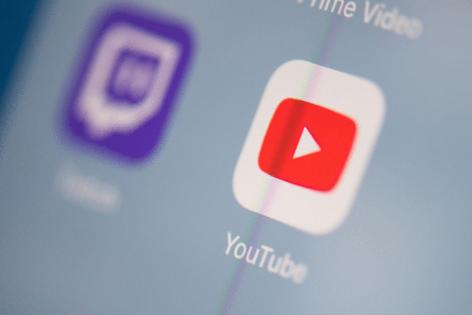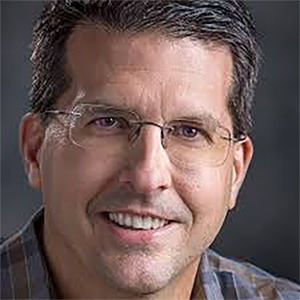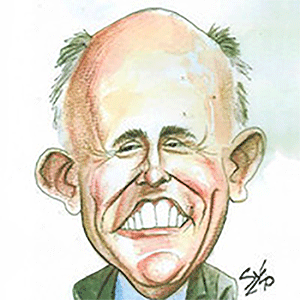YouTube turns 20 years old. How it changed TV as we know it
Published in Entertainment News
LOS ANGELES — The grainy 19-second YouTube video that started it all hardly had the makings of a viral sensation.
Shot at the San Diego Zoo, the primitive video clip showed Jawed Karim, the platform's co-founder, complimenting the elephants in the frame behind him. "The cool thing about these guys is they have really, really, really long trunks," Karim said.
The clip, titled "Me at the zoo," was the first video uploaded onto YouTube 20 years ago, opening the door to a new medium of television.
From those modest beginnings, the site opened the gates for users from around the world to post funny, viral videos that could take the internet by storm, racking up millions of views and earning some millions of dollars.
YouTube has evolved into not a mere tech operation, but a formidable force in television.
Popular music artists such as Justin Bieber rose to fame on YouTube and social media stars including MrBeast turned their large followings into powerful entertainment companies. The destination for homemade videos such as "Charlie bit my finger" is now the streaming home to large music festivals like Coachella and NFL football games.
Google-owned YouTube's revenue last year was estimated to be $54.2 billion, which would make it the second-largest media company behind Walt Disney Co., according to a recent report from research firm MoffettNathanson, which called YouTube "the new king of all media."
"We can never underestimate what a big thing YouTube was when it came out," said Robert Thompson, director of Syracuse University's Bleier Center for Television and Popular Culture. "When that debuted 20 years ago, that was a sign of major important changes, not only in the way that we watch TV, but in what we even thought of as TV."
YouTube, run by Chief Executive Neal Mohan since 2023, accounted for 12% of U.S. TV viewing in March, more than other rival streaming platforms including Netflix and Tubi, according to Nielsen.
More people are watching YouTube on TV sets rather than on smartphones and computer screens, consuming more than 1 billion hours on average of YouTube content on TV daily, the company said on its website.
"Its unmatched reach, strong brand, and omnipresent distribution channels mean that it can connect creators, advertisers, and viewers like no other platform can," MoffettNathanson analysts wrote in their report.
That has opened up opportunities for video creators like Dhar Mann, a former weed entrepreneur who started posting videos on YouTube in 2018 with no film background.
Today, his company, Burbank-based Dhar Mann Studios, operates on 125,000 square feet of production space, employs roughly 200 people and works with 2,000 actors a year on family friendly programs that touch on how students and families deal with topics such as bullying, narcolepsy, chronic inflammatory bowel disease and hoarding.
Mann made $45 million last year, according to Forbes estimates. The majority of his company's revenue comes through YouTube.
"I didn't have to wait two years for a studio to green light my deal and send me a check," 40-year-old Mann said. "I was able to get instant access to monetization as soon as I got people watching my videos, so YouTube has changed my life. I don't think it's just the future of TV — it is TV, and the world is catching on."
Humble origins
When YouTube first started in San Mateo, its founders weren't thinking they would take on the television industry.
They envisioned it as a dating site where people would upload videos and score them. When that didn't work, the founders decided to open up the platform for all sorts of videos. Users drove traffic to YouTube by sharing videos on MySpace.
"We've given creators and folks this way to find a global audience and share their passion with the world," said Amjad Hanif, vice president of product for YouTube in an interview. "Before YouTube, there was no way to do that. And now, whether you're in the U.S., or in Thailand, Southeast Asia, South America — you have access to this global network of creators to learn, educate, entertain."
One of the key ways YouTube built a large following was by embracing (and, crucially, paying) its video creators — the people who were posting content on the site.
In 2007, YouTube launched a partnership program, providing a way for creators to make money through ads. This financially motivated creators to keep posting, which brought more eyeballs and advertisers to YouTube.
"YouTube was the place where you went to for an exciting new art form," Thompson said. "This idea of the user-generated video, whether it's something somebody made, whether it's some clip they just found and posted, it was different. It wasn't just another sitcom or reality show."
Getting that first paycheck encouraged some early creators to pursue YouTube as a career. The ability to easily record oneself and post videos online for the world to see changed the way fresh talent could be discovered by Hollywood.
"The walls broke down for me where it's not just five places where you can go and discover talent," said Sam Grey, CEO of comedy studio and talent management firm Stapleview, who has signed comedy clients based on social media videos. "You don't have to move to one of the big cities. You can really do it from anywhere, and the cream will rise."
Patrick Starrr, who produces makeup tutorial videos, said he made his first $1 million through YouTube at the age of 25. He left his job at retailer MAC Cosmetics in Florida and moved to L.A.
"I'm living proof that you can turn your passion into a profession, and your purpose into power," wrote Starrr, 35, in an email. "YouTube gave me the mic, and I haven't put it down since."
It was still a fledgling career path at the time. Creators learned as they went, figuring out who to hire for their teams and how to negotiate their own brand deals. Some dealt with skeptical parents.
"My mom would always give me so much crap about it — she would say, 'Why do you want to do YouTube?'" said Chucky Appleby, now an executive at MrBeast. His reply: "Mom, you can make a living from this."
MrBeast's holding company, Beast Industries, which employs more than 400 people, made $473 million in revenue last year, according to Business Insider. In the last 28 days, MrBeast content — which includes challenges and stunt videos — received 3.6 billion views on YouTube, Appleby said.
Appleby, 28, said he's since bought a Jeep for his mom.
Piracy and safety concerns
But as YouTube's popularity skyrocketed in its early days, so did threats of copyright infringement lawsuits.
YouTube worked quickly to reach deals with music labels like Universal Music Group. In 2007, Paramount and MTV owner Viacom sued Google, which bought YouTube the year before for $1.65 billion, for copyright infringement. That case was later settled in 2014.
Google tried to address the entertainment industry's concerns by launching Content ID, which flags unauthorized content for media partners and allows them to choose whether to take those videos down or collect revenue from ads placed on them.
That, along with the YouTube Partner Program, "really ended up creating that full cycle that allowed the economy to thrive and YouTube to grow," Hanif said.
The company also navigated concerns from parents over what kids could see on the platform.
In 2015, YouTube launched a kids app with child-appropriate videos and parental controls. In 2019, YouTube and Google reached a $170 million settlement with the Federal Trade Commission and the New York attorney general that alleged YouTube collected data on children younger than 13 without their parents' consent. Since then, YouTube has changed the way it handles advertising on content meant for children.
The company says it limits data collection of videos for kids to only what is needed to support the operation of the service and doesn't serve personalized ads on those videos.
Growing competition
YouTube's ambitions expanded when it launched YouTube TV in 2017, a service with more than 40 live television networks. The offering was attractive to a growing number of cord-cutters and people who grew up watching YouTube.
YouTube also increasingly became the home for must-see events, including Coachella starting in 2011. In 2023, YouTube began streaming out-of-market network TV broadcasts of NFL Sunday ticket games.
Once considered a cheaper option for cable-less young people, YouTube TV now costs $82.99 a month after an increase that frustrated many users.
YouTube benefited from being a video pioneer, but it faces growing competition from social media rivals including Instagram and TikTok that try to woo influencers to post content on their platforms.
In 2020, YouTube launched its own form of shorter videos called "Shorts" to better compete with TikTok. Today, YouTube says Shorts has on average 70 billion daily views.
The company has also diversified the way that creators can make money beyond ads and brand deals, including through individual channel memberships. Creators say that YouTube stands out from the competition based on the amount of revenue the company is willing to share with creators, its data analytics and its reach.
Not every strategy was successful. Starting in 2016, YouTube announced a slate of premium scripted shows to its subscription service to compete with Hulu, but most of the shows didn't gain enough traction on the platform. "Cobra Kai," a series based on the "Karate Kid" film franchise, began as a YouTube Original and ended up becoming a hit for Netflix.
Media companies are noticing what works on YouTube too, including the popularity of video podcasters. Spotify is trying to capitalize on the video podcasting space, while Netflix is also exploring ways in.
Ian Hecox, president of comedy network Smosh, described the last 20 years on YouTube as waves, with up periods, down periods and algorithmic shifts. Still, he feels confident about the future. Smosh's YouTube audience includes people who watched Hecox as teens who now are adults with children who watch too.
"It's really just kind of a wild thing to see," 37-year-old Hecox said. "I have full-grown adults come up to me and tell me that I was their childhood."
©2025 Los Angeles Times. Visit latimes.com. Distributed by Tribune Content Agency, LLC.
















Comments